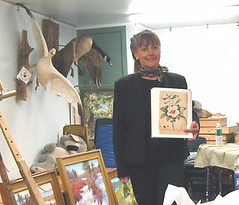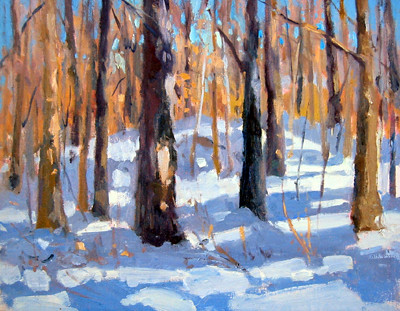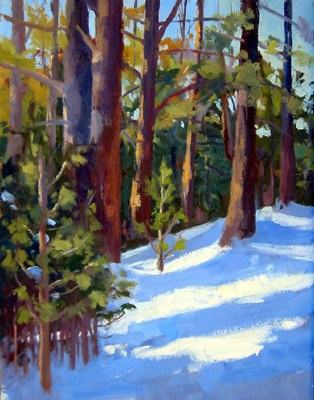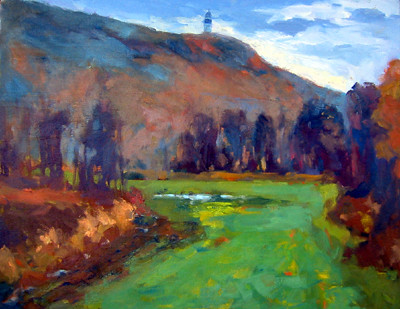Speaker: Painting Truth in Nature
The place simply called to her. Barbara Lussier returned to a bog in Killingly many times this winter to paint the colors and patterns seen there through bare limbs and under the weather. She spoke at the Connecticut Audubon Center in Glastonbury recently about her experiences painting the bog, and natural setting around the state.

Barbara is not “weather-whipped,” as she describes other, more fair weather plein air painters. Connecticut’s landscapes call her in weather fair and foul. And so she sets out to tell of them what she can, driving a tan PT cruiser personalized with the marks and aromas of oil paint, and equipped with a seemingly spindly contraption of an easel, but one she can assemble to stand up even to nor’easters.
All this to search for what she finds to be the truth in nature. On good days, she is carried away by the work, the act of portraying moments like those she spends at the bog in Killingly, and the weather, rain or cold, rarely matters. When everything is right, she says, scenes paint themselves.

Her portraits capture more than just the beauty in our surroundings; the scenes are also familiar. We recognize in them our own experiences and interpretations of Connecticut places. The color of the snow can convey the feeling of a bite in the air. Pine needles appear to bend and whistle with a cold wind.

She is joined on many outings by her husband, Connecticut ecologist Dr. Robert Craig. Dr. Craig was one of two biologists who conducted the first ecological survey of the the state in 1975. Last summer, Barbara and Robert collaborated to produce their guide to the state's most extraordinary natural places, Great Day Trips to Connecticut's Critical Habitats, realizing a dream they had long shared.

The book includes Dr. Craig's descriptions of the ecology of 16 habitat types vital to sustaining the state's native wildlife, field trips to examples of each of the 16 habitats, as well as reproductions of the paintings Barbara created about each of the sites. Included among them are hikes to many different local forests, swamps, bogs, beaches, traprock ridges, and more.
0 Comments:
Post a Comment
<< Home